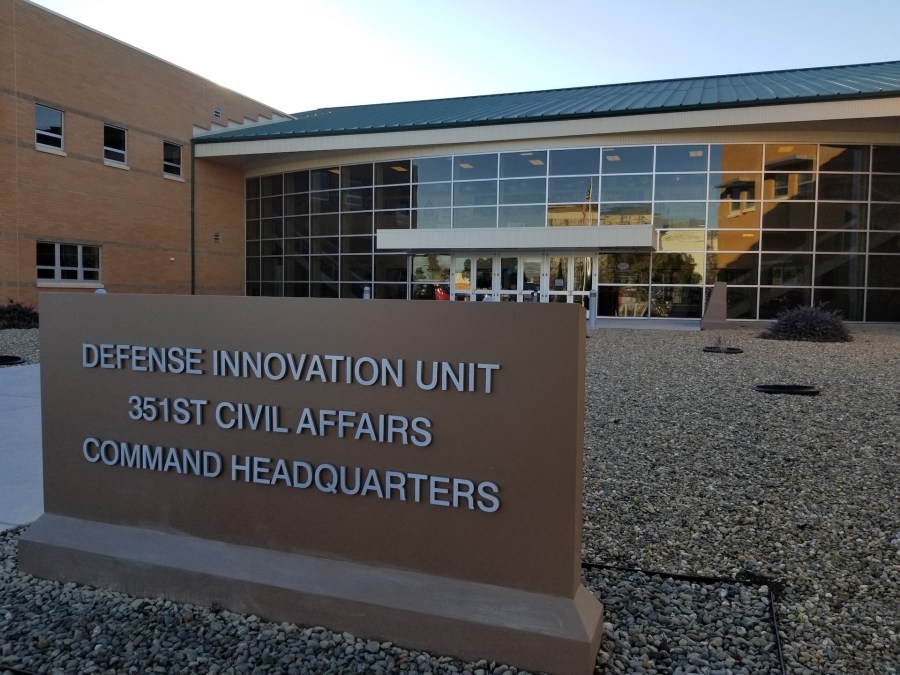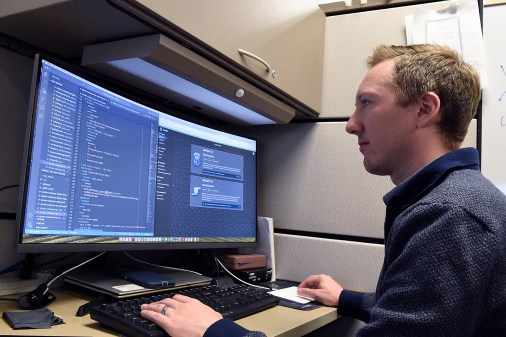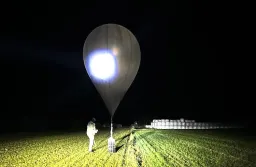DIU wants to buy generative AI tech for Thunderforge initiative

The Defense Innovation Unit is on the hunt for generative artificial intelligence tools to help the U.S. military with joint planning and wargaming.
DIU issued a solicitation to industry Friday via its commercial solutions opening contracting mechanism to support an effort called Thunderforge.
“The joint planning process is complex, time-consuming, and resource-intensive. Planners and other staff members must synthesize large amounts of information from diverse sources, consider multiple courses of action (COA), and produce detailed operational plans and orders – often under significant time pressure. As the operational environment becomes more complex and dynamic, there is a need to accelerate and enhance joint planning capabilities while maintaining rigor and human judgment,” the document states.
To get at that problem, officials are looking to gen AI systems “to augment human planners and command staff by rapidly processing information, producing draft planning products, and ultimately aiding in generating options.”
Generative artificial intelligence tools can create new content — such as text, images, audio, and video — based on the data they’ve been trained on and human prompts.
Pentagon leaders have previously expressed interest in multimodal AI.
The DIU solicitation notes that the organization is looking for tech that can quickly ingest, process and summarize large volumes of info relevant to military planning from “diverse source modalities and data formats.”
The wish list includes the ability to identify key insights, patterns and relationships from the data fed into the system, as well as produce draft operations plans, concept plans and operations orders, among other desired attributes.
Wargaming is expected to inform operational planning and activities.
Officials seek AI solutions that can perform “automated wargaming of courses of action against likely adversary actions” and produce “comparative analysis of COA advantages, disadvantages, and risks,” per the solicitation.
To help maintain human oversight, the Defense Department wants personnel to be able to easily review, modify, refine and compare products that the AI churns out.
Responses to the solicitation are due Sept. 6.
DIU noted that it’s looking for contractors that already have experience and authorization to work on classified networks and employees who are cleared to handle top secret/sensitive compartmented information (TS/SCI). Additionally, companies whose solutions have been deployed on information systems at Impact Level 6 or higher — or have an equivalent Authority to Operate (ATO) — will have a leg up.
By using its commercial solutions opening and other transaction authority, DIU aims to cut through the bureaucratic red tape associated with the Pentagon’s traditional acquisition processes and get companies on contract quickly.
The Thunderforge solicitation noted that contractors that receive other transaction agreements for prototypes may end up landing follow-on production contracts if their technology fits the bill.
“The follow-on production contract or transaction will be available for use by one or more organizations in the Department of Defense and, as a result, the magnitude of the follow-on production contract or agreement could be significantly larger than that of the prototype OT,” the document states.
DIU’s outreach to industry is the latest expression of Pentagon interest in using generative artificial intelligence to aid military decision-makers.
In June, the Army’s chief information officer issued guidance for the service’s development and deployment gen AI, including large language models.
“Gen AI models present unique and exciting opportunities for the Army. These models have the potential to transform mission processes by automating and executing certain tasks with unprecedented speed and efficiency. Commanders and senior leaders should encourage the use of Gen AI tools for their appropriate use cases,” CIO Leonel Garciga wrote in a memo for commands and offices across the department.
Leaders in the Department of the Air Force have specifically expressed an interest in using generative artificial intelligence for wargaming.
The Air Force Futures office at the Pentagon is responsible for using wargaming and workshops for developing strategy and concepts, integrated force design and conducting assessments of the operating environment, among other tasks.
During a virtual event in April hosted by the Mitchell Institute, Lt. Gen. David Harris, deputy chief of staff of Air Force Futures, noted that he’d recently visited the AI Accelerator hub led by the DAF and the Massachusetts Institute of Technology.
“The first place that we’re looking at it is within our wargaming methodology. And that is being able to have thousands of runs using either an automated assistant or using somebody with a knowledge assistant, [or] even something as simple as rapid adjudication in some of these games, so instead of just getting three turns against an adversary, I can run thousands of iterations in one turn to understand what some of the optimal solutions are of, hey, maybe if you place your force up into the northern sector versus the southern, it created a different opportunity. And understanding some of that trade space is, I think, where AI is going to be able to help us out a lot,” Harris said.






